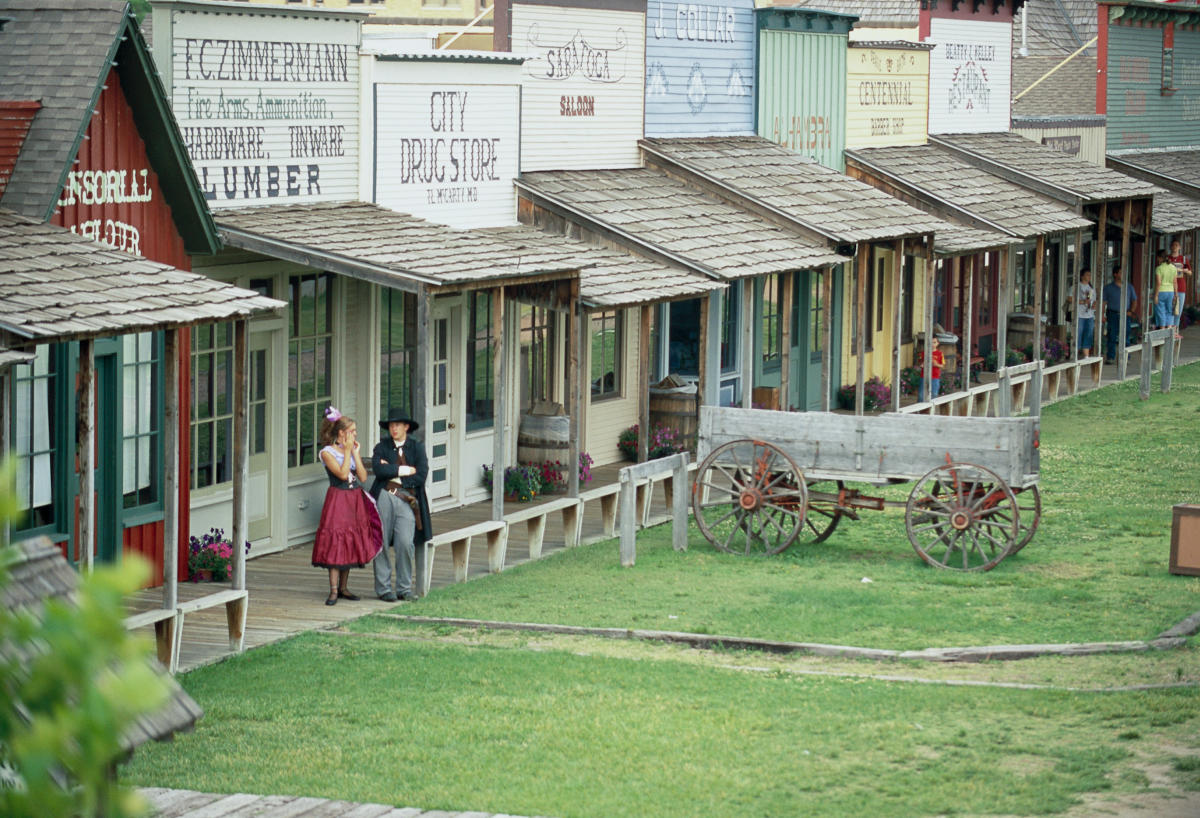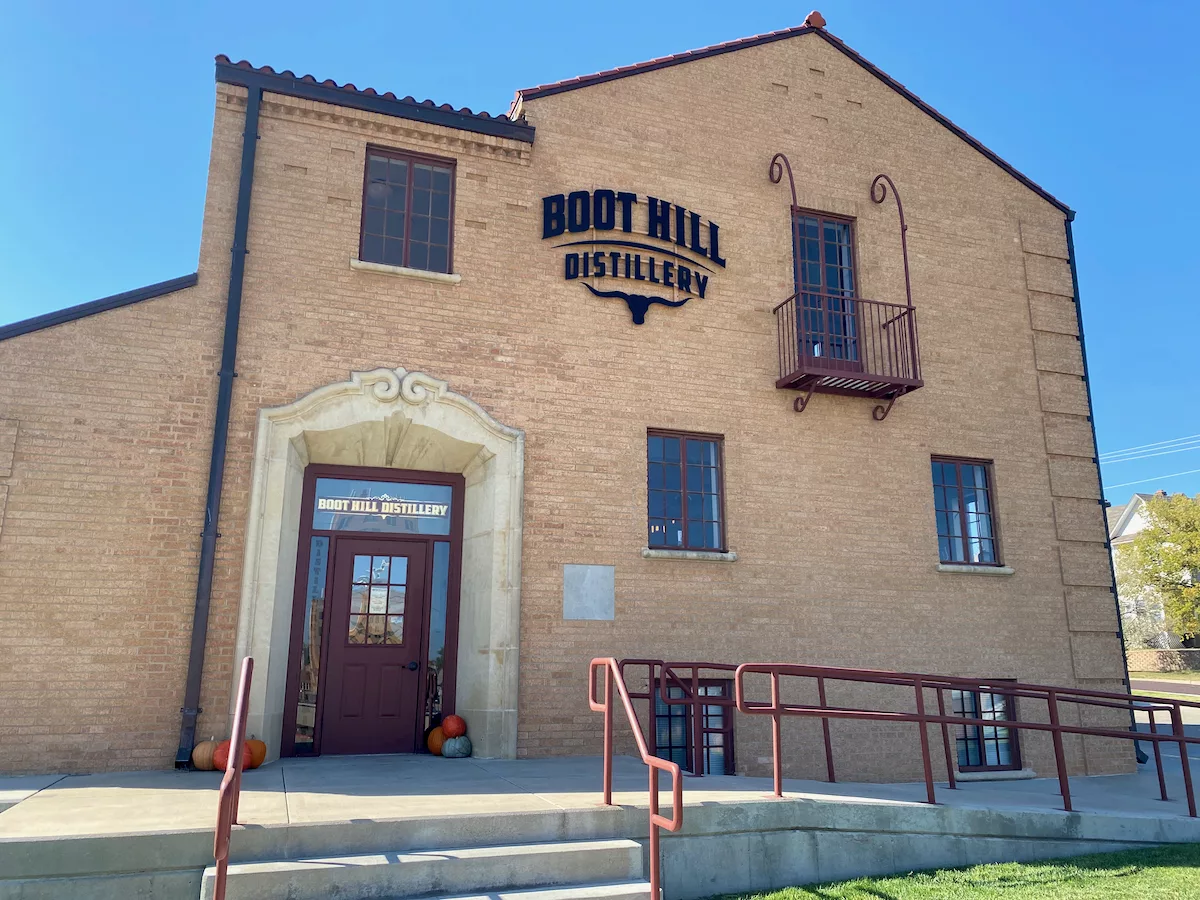
Where the Wild West Lies: The Enduring Legend of Boot Hill, Dodge City
The wind whispers across the High Plains of Kansas, carrying with it echoes of gunshots, the lowing of cattle, and the raucous laughter from saloons long since vanished. In Dodge City, where the Arkansas River flows east and the horizon stretches endlessly, stands a stark, poignant reminder of America’s untamed frontier: Boot Hill. More than just a cemetery, this iconic site is a crucible where history, myth, and the raw realities of the Wild West converge, drawing visitors from around the globe to contemplate a bygone era of lawlessness, courage, and swift, often violent, death.
Boot Hill, specifically the reconstructed version atop a bluff overlooking the historic town, represents a crucial chapter in the narrative of the American West. It is a symbol of the boomtowns that sprang up along the cattle trails and railroad lines, places where fortunes were made and lost, and where life was cheap and justice often dispensed at the end of a barrel. To understand Boot Hill is to understand the very essence of Dodge City, once famously dubbed "the wickedest little city in America."
The Genesis of a Graveyard: Dodge City’s Violent Birth

Dodge City’s origin story is typical of many frontier towns: born of opportunity and necessity. Established in 1872 with the arrival of the Atchison, Topeka & Santa Fe Railroad, it quickly became the primary shipping point for millions of longhorn cattle driven north from Texas along the Western Trail. Cowboys, fresh off months on the dusty trail, converged on Dodge City, eager to spend their wages on whiskey, women, and gambling. This influx of money, combined with a transient population and a nascent legal system, created a volatile environment.
"Dodge City was the destination for a whole lot of tough men, and a whole lot of tough decisions," notes a local historian, Dr. Emily Carter, from the University of Kansas. "It was a pressure cooker of commerce, ambition, and desperation. Violence wasn’t an anomaly; it was an almost daily occurrence."
With shootouts, barroom brawls, and sudden deaths becoming commonplace, there arose an urgent need for a place to bury the deceased. The first settlers, likely out of convenience and a grim practicality, began burying those who "died with their boots on" – men who met a violent end – on a barren hill just north of the town. These were not elaborate burials. Graves were often shallow, marked by simple wooden crosses, if at all, or sometimes just a pile of stones. The name "Boot Hill" itself, evocative of these hasty, unceremonious burials, became synonymous with such frontier cemeteries across the West, from Tombstone, Arizona, to Deadwood, South Dakota.
The Inhabitants of Boot Hill: A Cross-Section of Frontier Life
Who found their final resting place on the original Boot Hill? The roster was diverse, reflecting the chaotic mosaic of frontier life. There were cowboys killed in disputes over cards or women, gamblers who ran afoul of a winning streak, outlaws who met their match, and even lawmen who fell in the line of duty. Disease, a constant threat in unhygienic boomtowns, also claimed its share of victims, as did accidents inherent to cattle driving and railroad construction.
One of the most famous (though perhaps apocryphal) tales associated with Boot Hill involves a man named Jack McCall, whose demise is often cited as a classic example of a "Boot Hill burial." While the real Jack McCall was indeed buried in Deadwood’s Boot Hill after being hanged for the murder of Wild Bill Hickok, the spirit of such tales perfectly captures the essence of Dodge City’s graveyard. These were individuals whose lives were cut short, often brutally, without the comfort of family or the solemnity of a traditional funeral. Their stories, though largely unrecorded in detail, became part of the town’s folklore.
The rapid turnover of Dodge City’s population meant that many graves were quickly forgotten or overgrown. As the town matured and became more established, the need for a proper, organized cemetery arose. In the late 1870s and early 1880s, most of the remains from the original Boot Hill were disinterred and reburied in the newly established Fort Dodge Cemetery and later, Maple Grove Cemetery. The original bluff, no longer needed as a burial ground, slowly faded from public memory, becoming just another barren hill.
From Forgotten Hill to Enduring Symbol: The Reconstruction of Boot Hill

The story of Boot Hill doesn’t end with its disinterment; rather, it enters a new phase – one of historical preservation and myth-making. As the Wild West era receded into the past, it began to be romanticized. The legends of Wyatt Earp, Bat Masterson, Doc Holliday, and the Earp brothers’ exploits in Dodge City (though many of their more famous adventures occurred elsewhere) grew in stature. People yearned for tangible connections to this exciting, dangerous period.
In the mid-20th century, civic leaders in Dodge City recognized the powerful draw of their town’s Wild West heritage. In the 1940s, a decision was made to reconstruct Boot Hill on its original bluff. This was not a re-creation of the exact burial sites, but rather a symbolic representation, designed to evoke the appearance and atmosphere of the original cemetery. Simple wooden markers, some bearing the names of real individuals known to have been buried there, others generic ("Unknown Cowboy," "Gambler"), were placed in neat rows, facing east towards the rising sun, a traditional orientation for Christian burials.
This reconstructed Boot Hill became the centerpiece of the Boot Hill Museum, established in 1947. The museum itself is a treasure trove of artifacts, exhibits, and interactive displays that transport visitors back to Dodge City’s heyday. It features a replica of Front Street, the town’s notorious main thoroughfare, complete with a saloon, general store, barber shop, and marshal’s office. Daily reenactments of gunfights and historical skits further immerse visitors in the frontier experience.
"The reconstructed Boot Hill and the museum aren’t just about dusty old facts," says a current museum curator, John Davis. "They’re about telling a story. They’re about connecting people to the human drama of the Wild West – the struggles, the excitement, the incredible risks people took to build a new life."
The Enduring Appeal: History, Myth, and Modern Relevance
Today, Boot Hill remains one of Kansas’s most popular tourist attractions. Visitors walk among the grave markers, peering into the symbolic resting places of those who died violently. They stand on the bluff, gazing at the sweeping prairie landscape that once stretched untamed before them, and try to imagine the chaos and vibrancy of 19th-century Dodge City.
The enduring appeal of Boot Hill lies in its ability to straddle the line between historical fact and popular myth. While the museum strives for historical accuracy, it also acknowledges and plays into the romanticized image of the Wild West. This balance is crucial; it educates without sacrificing the adventurous spirit that draws so many.
Boot Hill serves several vital functions in contemporary society:
- Historical Preservation: It ensures that the stories and realities of frontier life are not forgotten. It provides a tangible link to a pivotal period in American expansion.
- Educational Resource: Through its museum and interpretive programs, it teaches about the challenges of law and order, the economics of the cattle industry, and the diverse populations that converged on the frontier.
- Cultural Iconography: It reinforces the imagery of the American West – the lone cowboy, the quick draw, the rough justice – which continues to permeate literature, film, and popular culture.
- A Place of Reflection: For many, walking through Boot Hill is a sobering experience, a stark reminder of the fragility of life and the harsh conditions faced by early settlers. It prompts reflection on how far society has come in establishing order and safety.
"When you stand on Boot Hill, you’re not just looking at a collection of graves," observes Dr. Carter. "You’re looking at the raw edge of American expansion. You’re seeing the price paid for progress, the human cost of taming a continent. It’s a powerful, visceral connection to our past."
Conclusion: Whispers on the Wind
As the sun sets over Dodge City, casting long shadows across the wooden grave markers, the wind still whispers across Boot Hill. It carries the faint, ghostly echoes of a past that was both brutal and exhilarating. The original graves may be gone, their occupants moved to more orderly resting places, but the spirit of Boot Hill remains. It is a testament to the resilience of those who braved the frontier, a reminder of the swift hand of justice (or injustice), and a powerful symbol of the Wild West that continues to capture the imagination of generations.
Boot Hill is not merely a collection of names on wooden planks; it is a repository of stories, a silent witness to the forging of a nation. It invites us to remember, to learn, and to perhaps even feel the phantom dust of the cattle drives on our faces, as we stand where the wild west truly lies, forever etched into the Kansas plains.


